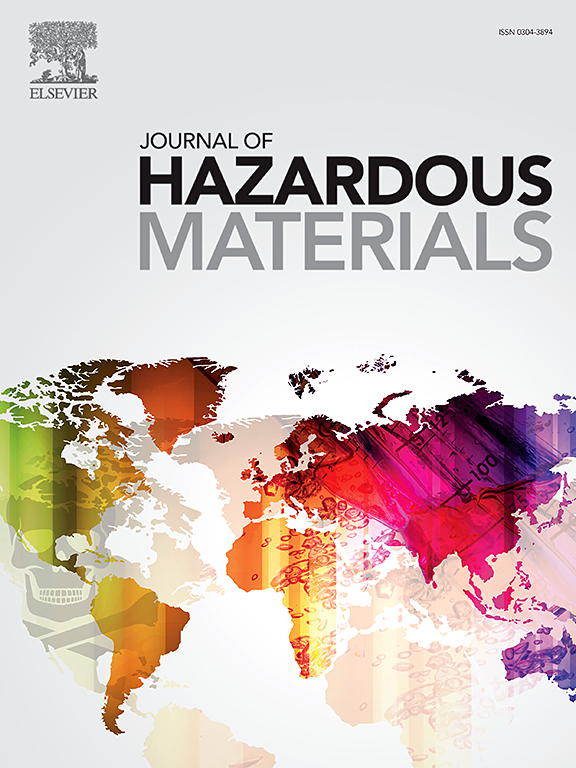Assessment of the effect of indoor air stability and airflow field on the multi-person infection risk
IF 12.2
1区 环境科学与生态学
Q1 ENGINEERING, ENVIRONMENTAL
引用次数: 0
Abstract
The transmission of pollutants and viral aerosols is an important way to cause indoor respiratory infections. Influence of ventilation modes and indoor air stability (IAS) on infection risk of the sitting breathing microenvironment of four people were simulated by CFD. Ventilation efficiency and infection risk were assessed using the contaminant dispersion index (CDI) and a Wells-Riley model based on SF6. The results show that unstable, upper supply and lower return contribute to the uniform indoor airflow and the average indoor wind speed is approximately twice that of other working conditions. Under the upper supply and lower return, the average SF6 concentration in the breathing microenvironment under unstable condition was 20.4% lower than stable condition. Unstable can increase the intensity of turbulent fluctuations, enhance vertical diffusion, break the accumulation of pollutants, rapidly dilute and remove SF6 in the breathing microenvironment. Upper supply and lower return can reduce the average CDIb by 30% to 65% within 15 to 30 min under unstable condition which has the strongest pollutant diffusion capacity. Under stable condition, the transient infection risk at the location next to the infected person is lower than that under unstable condition. Ventilation strategies and indoor air stability will have an impact on infection risk after 16 min. The combination of upper supply lower return and unstable condition can reduce the infection risk of three susceptible individuals by 51.3%, 35.6% and 11.4% than that under stable condition, respectively.

室内空气稳定性及气流场对多人感染风险的影响评价
污染物和病毒气溶胶的传播是引起室内呼吸道感染的重要途径。采用CFD模拟了通风方式和室内空气稳定性对4人坐着呼吸微环境感染风险的影响。采用污染物分散指数(CDI)和基于SF6的Wells-Riley模型评估通风效率和感染风险。结果表明:不稳定、上送风、下回风有利于室内气流均匀,室内平均风速约为其他工况的2倍;在上供下回的情况下,不稳定工况下呼吸微环境中SF6的平均浓度比稳定工况低20.4%。不稳定可以增加湍流波动的强度,增强垂直扩散,打破污染物的积聚,迅速稀释和去除呼吸微环境中的SF6。在污染物扩散能力最强的不稳定工况下,上供下回可在15 ~ 30 min内使CDIb平均降低30% ~ 65%。在稳定状态下,感染者旁边位置的短暂感染风险低于不稳定状态下的风险。通风策略和室内空气稳定性对16 min后的感染风险有影响,上供低回和不稳定条件组合可使3个易感个体的感染风险比稳定条件下分别降低51.3%、35.6%和11.4%。
本文章由计算机程序翻译,如有差异,请以英文原文为准。
求助全文
约1分钟内获得全文
求助全文
来源期刊

Journal of Hazardous Materials
工程技术-工程:环境
CiteScore
25.40
自引率
5.90%
发文量
3059
审稿时长
58 days
期刊介绍:
The Journal of Hazardous Materials serves as a global platform for promoting cutting-edge research in the field of Environmental Science and Engineering. Our publication features a wide range of articles, including full-length research papers, review articles, and perspectives, with the aim of enhancing our understanding of the dangers and risks associated with various materials concerning public health and the environment. It is important to note that the term "environmental contaminants" refers specifically to substances that pose hazardous effects through contamination, while excluding those that do not have such impacts on the environment or human health. Moreover, we emphasize the distinction between wastes and hazardous materials in order to provide further clarity on the scope of the journal. We have a keen interest in exploring specific compounds and microbial agents that have adverse effects on the environment.
 求助内容:
求助内容: 应助结果提醒方式:
应助结果提醒方式:


